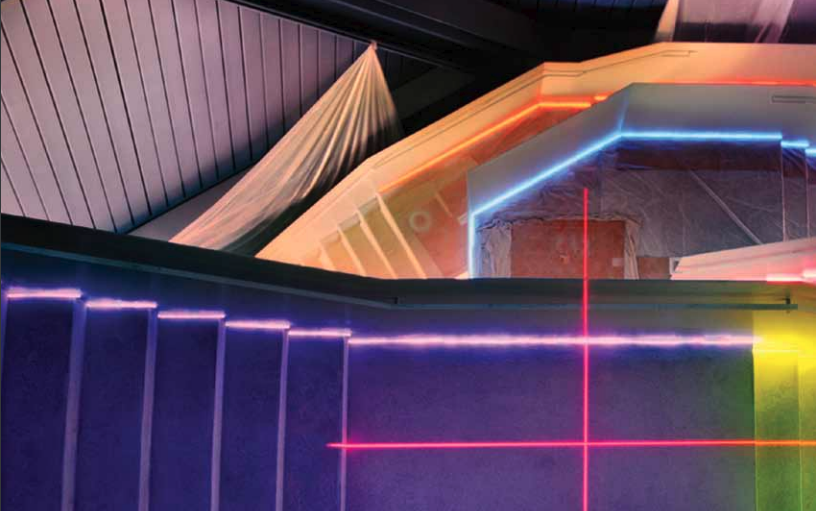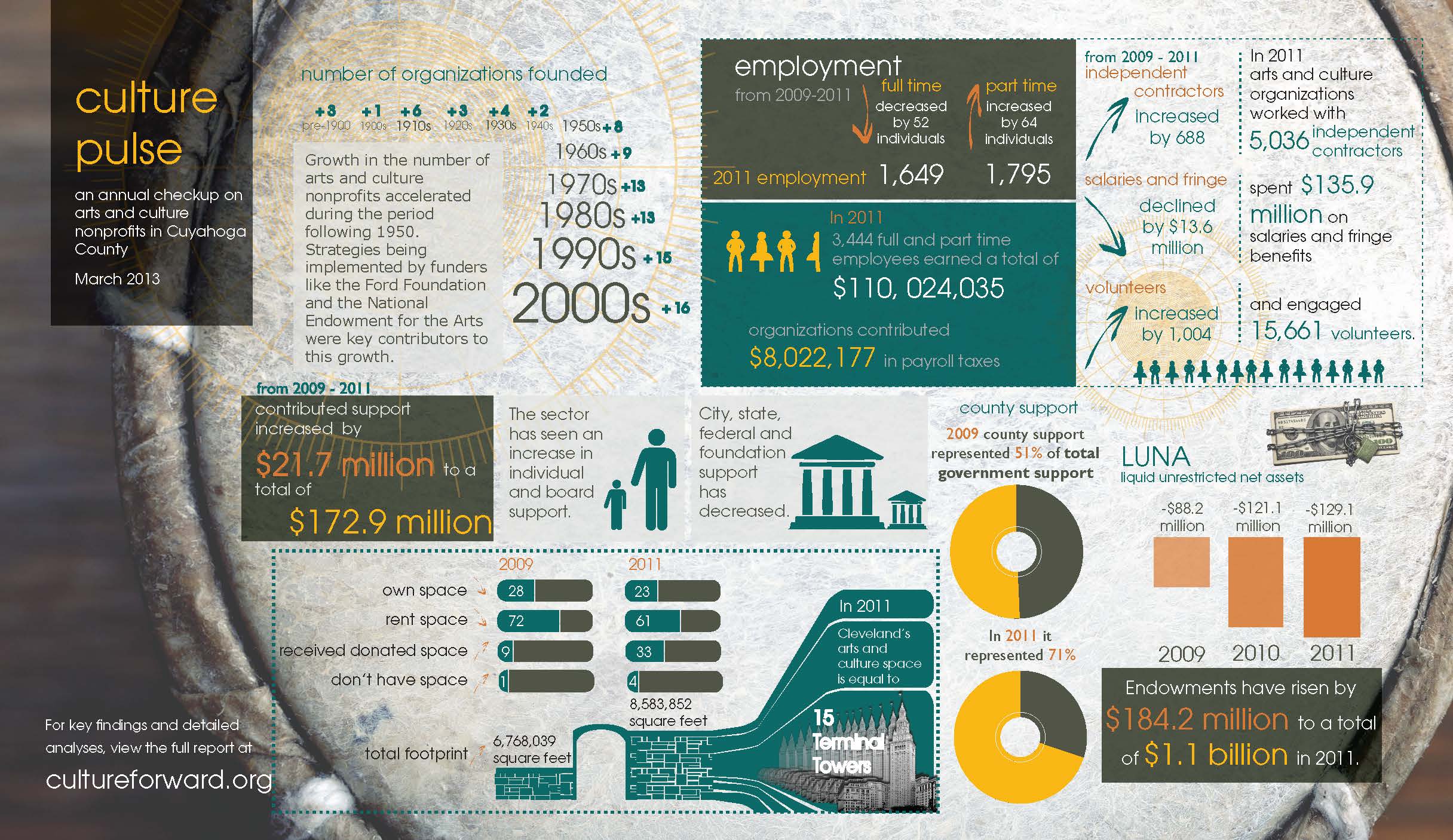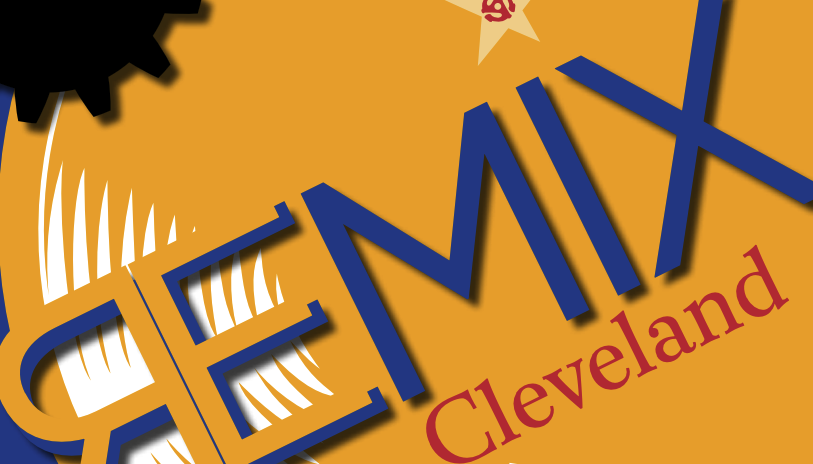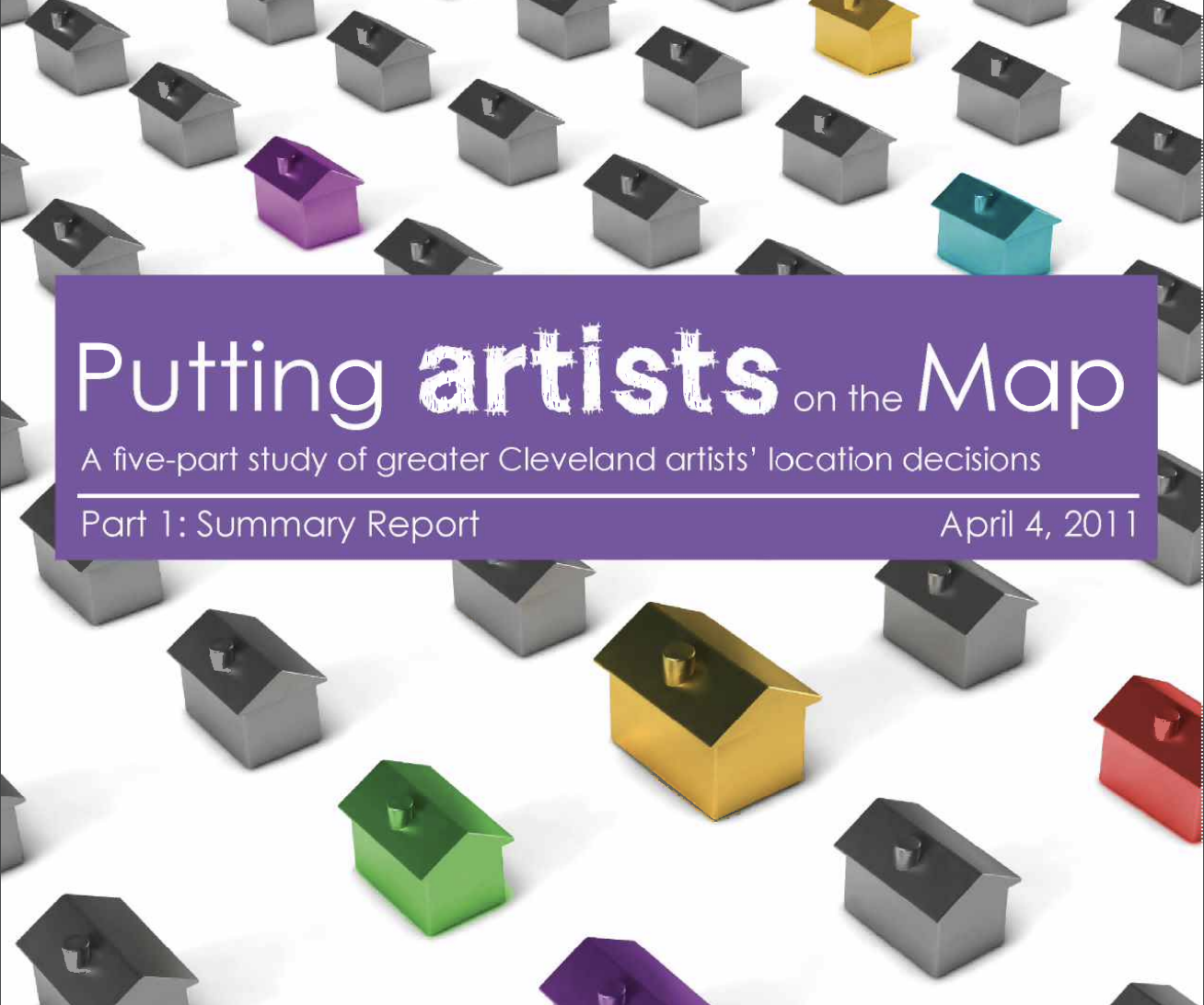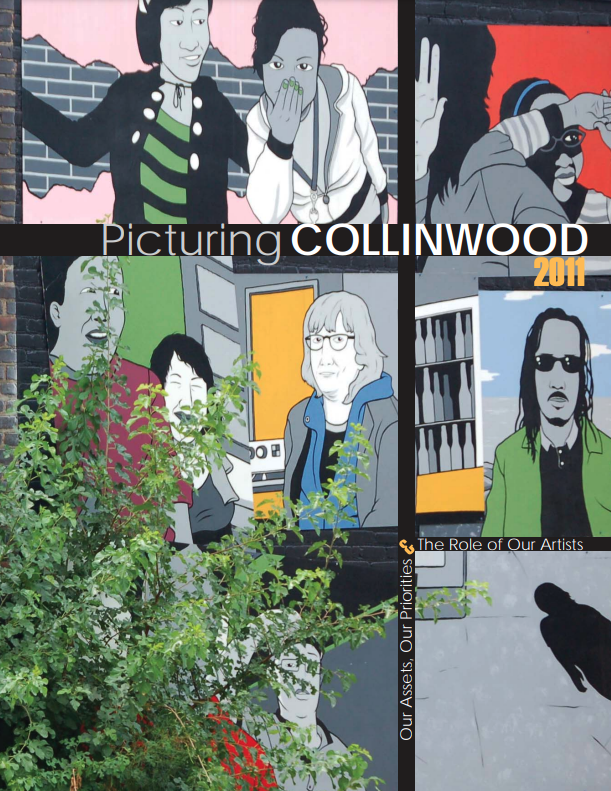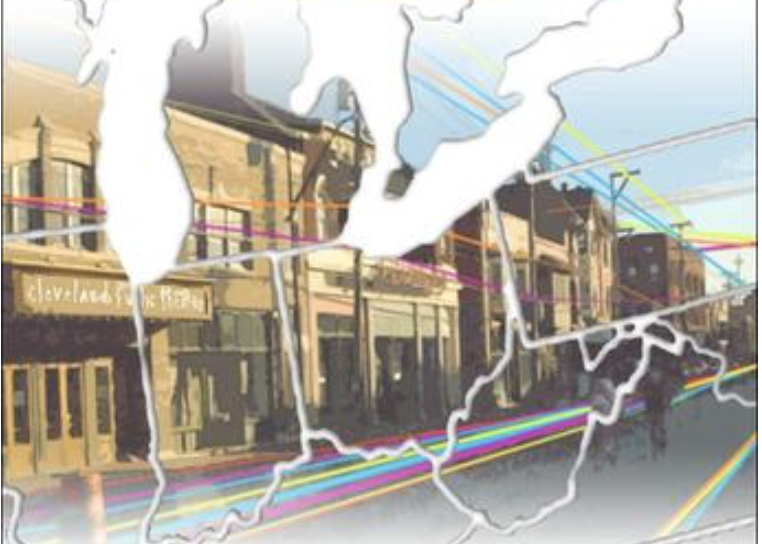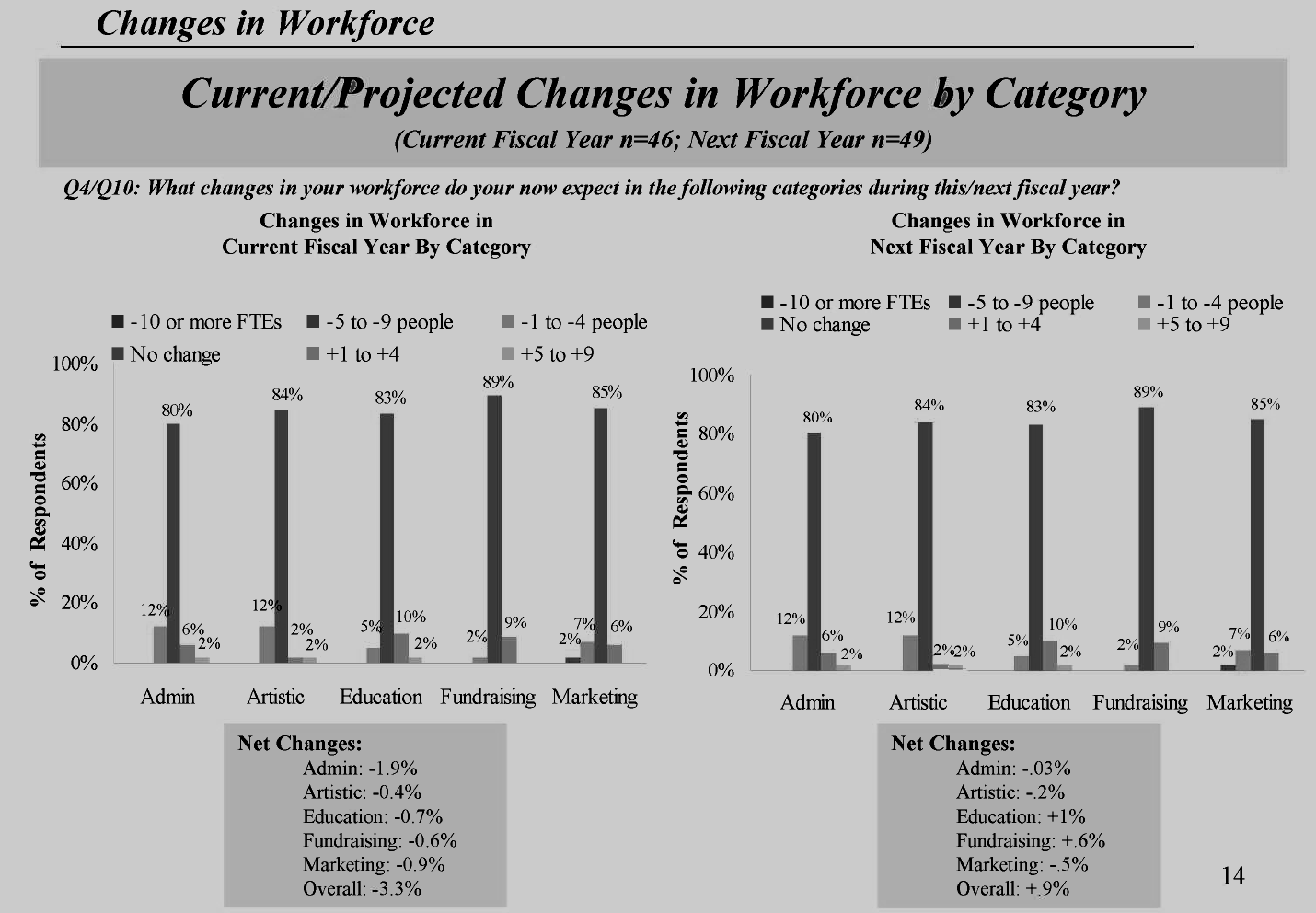Forming Cleveland
Forming Cleveland
A Visual Arts, Craft and Design Industry Study

Visual arts, craft and design are a large part of our daily lives, which are inundated with images not only through museums or private collections, but also through product consumption. Art penetrates our environments and can inspire collective action. The creative process inspires us to think about new concepts, applications, and markets for stimulating innovation. In order to position greater Cleveland’s visual arts, craft and design sector for continued growth, the community needs to understand the strengths and challenges facing the sector. Forming Cleveland provides a foundation of research to achieve this aim as well as spur discussions about how to strengthen the sector in its role as an innovator for our region. Arts Cleveland and Cleveland State University partnered to explore the visual arts, craft and design industry in this study. It includes eight case studies on how the visual arts, craft and design industry is impacting our city’s landscape and vision for our future.
Creative Minds in Medicine
Creative Minds in Medicine
A Cleveland Creative Intersection

Cleveland is fortunate to be home to world-class healthcare and arts and culture assets. Increasingly, these sectors are developing creative intersections and partnerships which are impacting individual and community health and well-being. From expressive arts therapies and the design of healthcare environments to addressing public health issues and enriching medical education through the arts, Creative Minds in Medicine explores a broad range of Cleveland’s arts and health intersections and poses recommendations for strengthening them in the future. Learn more about this innovative work through six case studies, which demonstrate how Cleveland’s arts and health practitioners are creating positive outcomes for individuals while also leading our city to a healthier future.
Case Studies
- Art Therapy Studio 1.44 MB
- Devising Healthy Communities 1.26 MB
- Billy Bear’s Honey Chase 1.30 MB
When Artists Break Ground
When Artists Break Ground
When Artists Break Ground provides information about, and lessons from, the Artists in Residence program, a collaboration between CPAC and Northeast Shores. The organizations invested $2.2 million in a 3-year period into artist-neighborhood relationships in the Waterloo area in North Shore Collinwood. The report shares how the process worked: its strengths, its shortcomings and third-party recommendations and reflections. A wealth of data supplements the report to illustrate changes in neighborhood residents’ perceptions, traction among audiences and changes to the neighborhood’s landscape.
Culture Pulse 2013
Culture Pulse is an in-depth analysis of the financial, human capital and infrastructure health of 93 arts and culture nonprofits in Cuyahoga County. Culture Pulse leverages information from the Ohio Cultural Data Project (OCDP) to examine trends over 2009-11 and to discuss the future implications for arts and culture organizations in Cuyahoga County. 2013.
The rhythmic beat of a drum builds tempo and helps drive a song’s momentum forward. A beat is counted and occurs with regularity throughout a song just as a person’s pulse rate can be monitored as a basic measure of health. Like the beat in a song or the rate of a pulse, regular measurement of indicators helps to track our arts and culture sector’s health and momentum.
In Culture Pulse, Arts Cleveland (formerly Community Partnership for Arts and Culture) leveraged 2009-2011 data from the Ohio Cultural Data Project on a sample of 93 arts and culture nonprofits in Cuyahoga County. Through this analysis, Arts Cleveland has gained a deeper understanding of their financial, human capital and infrastructure health. Cuyahoga County’s arts and culture sector is an extraordinary asset, and careful examination will help to sustain its strength.
Collaborative Marketing Database: Audience Development
Collaborative Marketing Database: Marketing and Audience Development Project
Community Report on Arts and Culture Consumers . 2012

The Collaborative Marketing Database is an initiative between Northeast Ohio arts and cultural organizations and is governed by these member organizations. It is operated by Elliott Marketing Group of Pittsburgh, PA. Arts Cleveland coordinates the collaborative, serves as the intermediary between Elliott Marketing Group and the consortium members, and facilitates meetings among the members. This report provides insights on arts and culture consumers based on data that has been aggregated from the Collaborative Marketing Database. Two primary statistical models are used: a market model and a cross-sell model.
Remix Cleveland
A Music Industry Study

Cleveland’s music scene is rooted in a music legacy of groundbreaking performances, local talent, and music innovation. Arts Cleveland (formerly Community Partnership for Arts and Culture) and Cleveland State University partnered to explore the music industry in this study. This report’s objective was to understand the Cleveland Music Sector today and assess the economic impact of music events and venues in Cuyahoga County. The report outlines how the Cleveland Music Sector can be engaged as a partner for shaping the city’s future. It includes six case studies on how the music industry is intersecting with some of Cleveland’s strongest sectors like manufacturing and medicine.
Putting Artists on the Map
Putting Artists on the Map
A Five-Part Series on Artist Locations

Arts Cleveland worked with Cleveland State University to develop four statistically-based methods to help communities understand what amenities may be driving arts and culture to them or away from them. Part 1 of this series is an executive summary of all findings. Part 2 discusses neighborhoods and what makes them attractive to artists. Part 3 discusses artists’ responses to a live/work preferences survey. Part 4 identifies variables that may suggest a neighborhood is desirable for artists. Part 5 details the characteristics of current artist residences. The data contained in these reports can help communities understand arts and culture assets and what they can do to become more artist-friendly.
Content
- Artist Neighborhoods 9.95 MB
- Artist Housing and Space Survey 4.48 MB
- Regression Model 3.99 MB
- Artist Housing Characteristics 1.39 MB
Picturing Collinwood
Picturing Collinwood
Our Assets, Our Priorities & the Role of Our Artists
North Collinwood is a complex community, a place with many strengths and a place with its fair share of challenges. This report is Arts Cleveland’s (formerly CPAC) and Northeast Shores’ attempt to get a better sense of what people think of the neighborhood and how to make it an even more creative, enjoyable and quality place.
From Rust Belt to Artist Belt II
From Rust Belt to Artist Belt II
A companion report to Arts Cleveland’s (formerly CPAC) second From Rust Belt to Artist Belt conference. 2010.
 Arts Cleveland’s second From Rust Belt to Artist Belt conference focused on what happens when the arts and culture sector and local neighborhoods join forces. The conference guided participants through a discussion of the work innovative community developers, artists, arts administrators and policy makers are doing to revitalize industrial cities. The breakout sessions were designed to inspire attendees to engage artists as partners in community revitalization. Best practices were also highlighted. This document is a detailed summary of the sessions, discussions and findings that emerged from the conference. It focuses on how former industrial cities are using artist-based community development to improve the stories being told about their communities today. It also focuses on the practical considerations of using this strategy.
Arts Cleveland’s second From Rust Belt to Artist Belt conference focused on what happens when the arts and culture sector and local neighborhoods join forces. The conference guided participants through a discussion of the work innovative community developers, artists, arts administrators and policy makers are doing to revitalize industrial cities. The breakout sessions were designed to inspire attendees to engage artists as partners in community revitalization. Best practices were also highlighted. This document is a detailed summary of the sessions, discussions and findings that emerged from the conference. It focuses on how former industrial cities are using artist-based community development to improve the stories being told about their communities today. It also focuses on the practical considerations of using this strategy.
Cuyahoga County Arts and Culture and Economic Recession. 2009
Arts, Culture, and the Recession
Analysis exploring the arts and culture sector in light of the “Great Recession.” 2009.
Some have suggested that the arts and culture sector, as it is currently constructed, has not kept pace with demographic, social and technological changes in the environment. This report presents the findings from two approaches that explore arts and culture in light of the “Great Recession.” This report makes recommendations for the sector’s sustainability and future recovery. It complements one of Arts Cleveland’s Arts and Culture Roundtable events.

